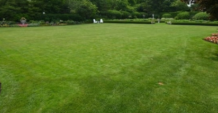By: Scott Eckert, County Extension Agent, Horticulture
It may have got its name from its pungent flavor being capable of knocking over a horse. I’m not really sure but horseradish is a condiment capable of clearing sinus cavities and savored in sauces for seafood, pork and beef dishes. Horseradish is a true perennial in the garden along with rhubarb and asparagus.
Horseradish is ready to dig after a hard freeze kills the foliage (usually November or December). The large roots can be harvested while smaller, pencil sized roots can be cut in 6-8 inch long sections as ‘seed’ or ‘sets’ for next year’s crop which are then immediately re-planted. Another option is to leave the horseradish in the ground and dig as needed. If you choose the latter option, be sure to heavily mulch the area so that the ground doesn’t freeze.
To use horseradish, peel the large, fleshy roots and cut into sections. Use a blender or food processor to chop the roots along with a small amount of water and a couple of ice cubes. Vinegar or lemon juice is added to stop the process that produces the “bite” of horse radish. Add immediately after blending for a mild flavor or wait up to 3 minutes to give the horseradish more kick. Use 2 to 3 tablespoons of vinegar or lemon juice per cup of horseradish sauce along with ½ teaspoon of salt for flavor.
Horseradish has an extremely strong odor and so you may wish to open the blender or food processor outdoors and to keep your face away from the container when opening. Store ground horse radish in a tightly sealed jar in a refrigerator until ready for use.




